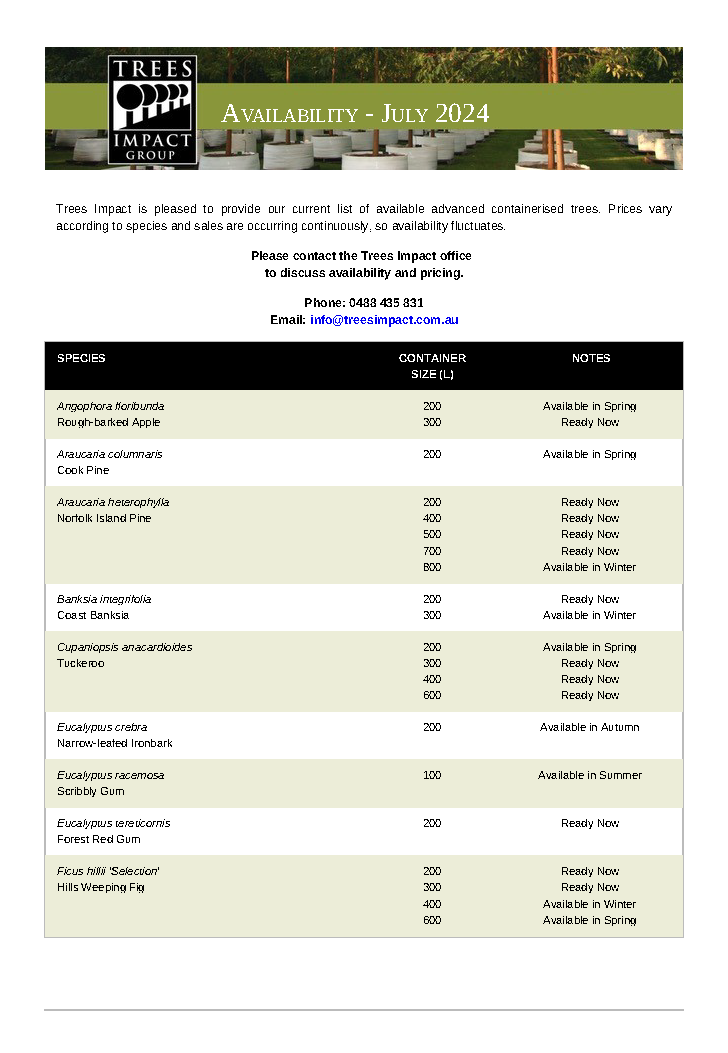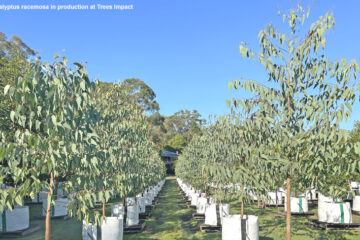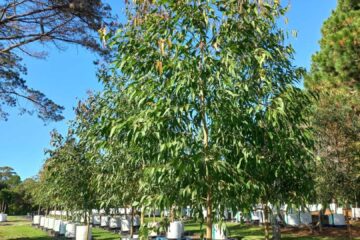The Perils of Staking Landscape Trees
Prolonged staking ruins trees.
If trees don’t need to support themselves, they won’t. So they develop a dependency on the support provided by the stake, fail to develop the strength needed to hold themselves upright and collapse when the support is taken away. Sometimes this can be corrected with good management over time but, all too often, the trees are doomed. [See Image 1]
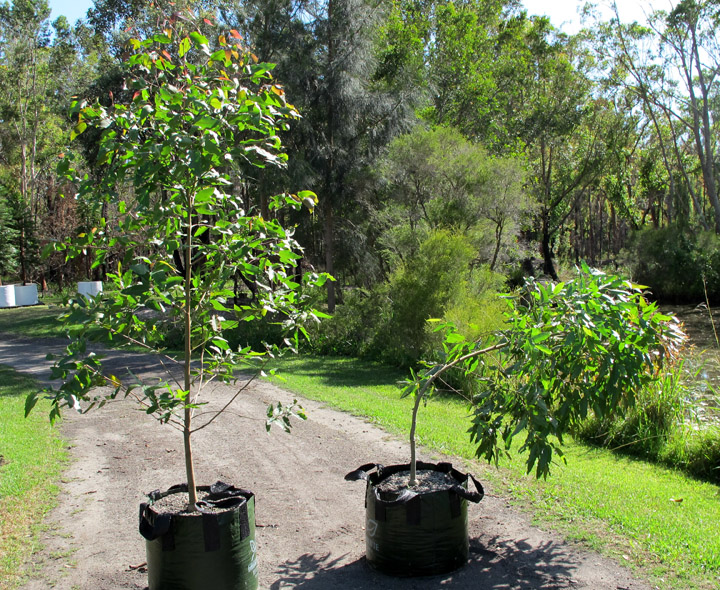
Left Tree: Note excellent stem calliper and taper. Grown without stake. Excellent.
Right Tree: Note poor calliper and lack of taper. Always staked then stake removed. Doomed.
That is not to say staking should be banned. It should not and is definitely useful in many situations. But it needs to be selective and managed rather than pervasive and entrenched practice.
STAKING IN THE NURSERY:
Strategic staking is a useful part of plant production. For example:
- Stakes are often used during production to stabilise trees immediately after potting up – so that, under wind pressure, fresh root development is not disturbed by the old rootball rocking and rolling in the new, soft media. It is a wise practice. But in that situation the stakes need to be removed as soon as a network of roots develops out into the new media. This allows the tree to begin the process of building the things it needs for self-support – a tapered stem and a well formed root system.
- Certain species are difficult to grow with straight stems. (Ficus hillii is a good example.) If those species are to have a form that the industry will be happy with, staking is an essential part of the growing process. In those cases where stakes are needed for form, they should be removed long before sale so that, by the time these trees reach the landscape, they have learned to be self-supporting.*
STAKING IN THE LANDSCAPE:
Even when trees supplied are self-supporting, there will be instances where stakes are required in the landscape. Reasons for this include species considerations, site conditions and physical risks to the trees.
- Species Considerations
Upright species with flexible stems, vigorous root systems and tapering crowns, such as the majority of our Eucalypts, are very efficient at shedding wind and, except in very sandy conditions, should not need staking on site if well grown. However, species such as Tuckeroos (Cupaniopsis anacardioides) with stiff inflexible stems, high dense crowns and a tendency to grow with shallower than normal root systems, will often need temporary support on site while establishing – not because they cannot hold their heads up but because strong winds can uproot them.
[Where such staking is required it will often dictate the use of three solid stakes, positioned outside the rootball, to which the tree is securely but loosely tied. When staked in this manner, trees like Tuckeroos can move around during conditions of light wind but are supported in high winds and storm events.] - Site Conditions
Well-grown trees of any species may need support when planted on very exposed sites. Where this is the case, stakes should be installed as described above, so the trees can move around in calmer conditions but are supported against excess movement in high winds and storms. - Physical Risks
There are a number of situations where stakes are required, not to support the trees but to prevent them being damaged by machinery or vehicles. For example, stakes may be considered necessary for trees planted in parkland to prevent damage by over-zealous mowing contractors; and trees in car parks might be staked to prevent damage by vehicles. If that is the reason for the stakes their role is really as tree guards only and the trees do not need to be tied to these ‘stakes’ at all.
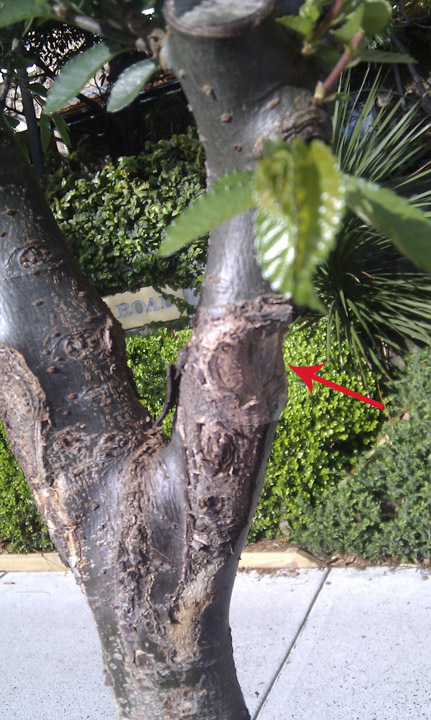
REMEMBER
- Stakes in the landscape can cause serious physical damage to stems (e.g. damage to bark and cambium through abrasion – as we all see too often). [See Image 2]
- Stakes often mask quality problems within the trees planted. For example, they prop-up trees with tall skinny stems, reverse taper, undersized rootballs and/or poor root structure.
- Staking trees at planting may help support them while they settle-in. However, if a tree already has serious structural problems, either above or below the ground, staking will not correct that; it will only serve to delay the inevitable failure. So, the problem will return to haunt you.
- Unnecessary staking of perfectly good trees can destroy them – by developing a stake dependency where none previously existed!
The overuse of stakes both within the nursery and on site is a common cause of problems with trees. Staking has many uses but, like people, trees need to learn to fend for themselves.
[*The NATSPEC specification requires that “Trees must be self-supporting”. That means that, if the root and stem development is inadequate and the trees cannot hold their heads up, they are unsuitable to be planted in a landscape. It does not ban staking but requires that trees be self-supporting in their containers before they leave the nursery.
This is the “ideal”. However, with smaller trees, say <45L, there are situations where it may be necessary to accept trees that still require support, assuming all other aspects of tree quality are acceptable. In those cases there must be an on-site program in place to wean the trees off their stakes at the earliest practicable time.
There are useful techniques to encourage the development of straight leaders while minimising stake dependency.]
